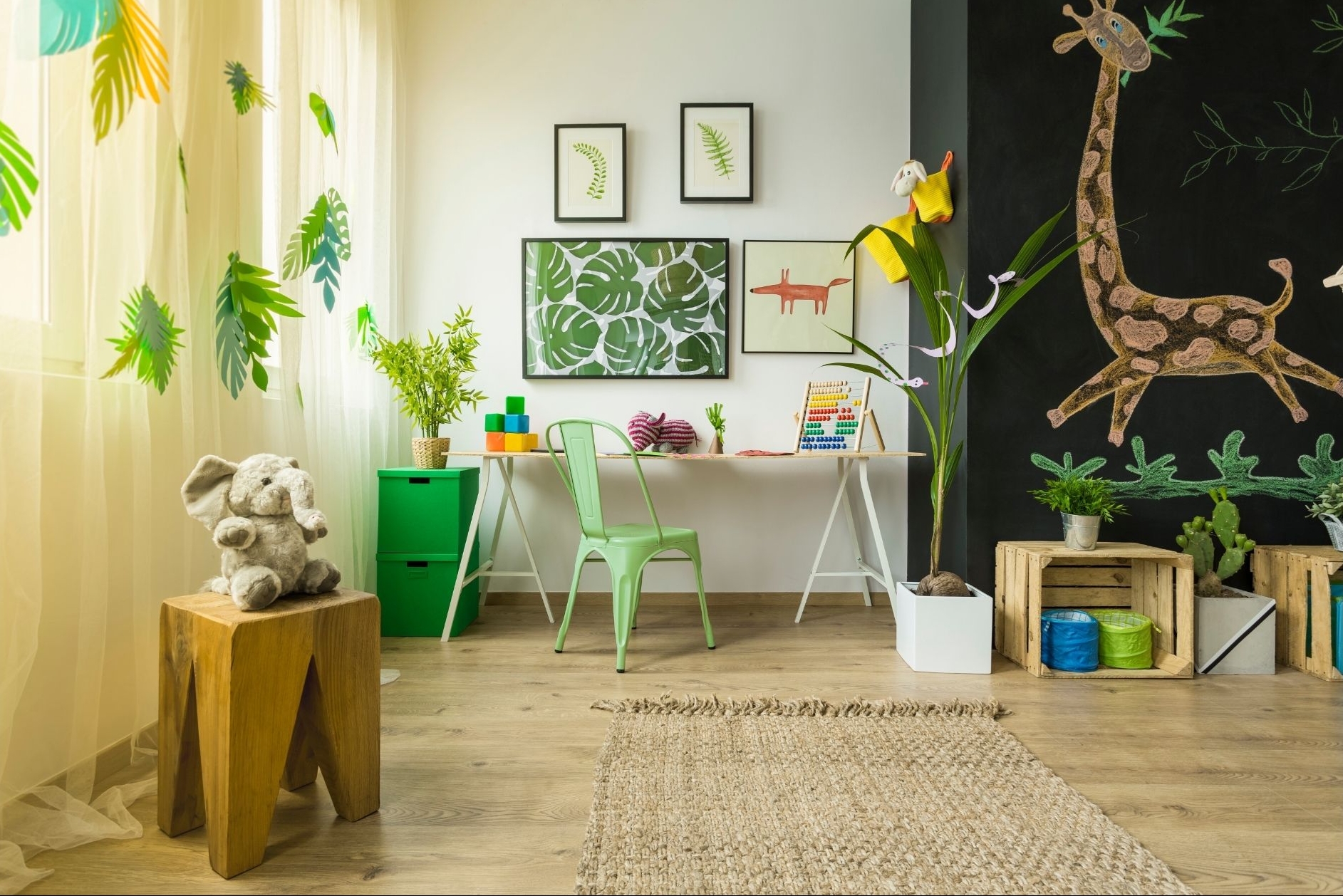Children's room decoration is one of the most special areas of a house and should be carefully considered. This space should not only be a sleeping area, but also a place where your child can play, learn and support his personal development. However, since children grow rapidly, the design of the room should also suit this change. The design concept, suitable for growth and change, has been designed to meet the needs of your child at all ages, to provide an environment suitable for their developing tastes and to offer long-term use. In this article, we will discuss this important concept in children's room decoration in detail.
Color Selection:
Color choice in children's rooms can affect your child's energy level. In addition to vibrant colors, soft tones can also be used. Color harmony should be ensured on walls, furniture and accessories. While pastel tones can be preferred for younger children, more vibrant and trendy colors can be chosen for teenagers.
Functionality and Practicality:
Functionality should be at the forefront in children's room design. The order of the room can be maintained with practical and useful solutions such as storage areas, organizers for toys, and bookshelves. Multifunctional pieces can be preferred when choosing furniture.
Security:
Safety is one of the most important factors in children's room decoration. Furniture with sharp edges should be avoided, safety covers should be added to sockets, and furniture should be mounted securely on walls to reduce the risk of falling.
Design Suitable for Growth and Change:
Since children grow rapidly, the design of the room should also suit this change. Furniture selection and arrangements should be adjustable according to the child's age and needs. This ensures the sustainability of a long-term design.
1. Modular Furniture:
Modular furniture can be preferred for a design suitable for growth and change. This type of furniture can be adjusted over time to suit your child's needs. For example, you can choose a convertible baby bed instead of a crib, or a bed frame that can be converted into a desk for teenagers.
2. Adjustable Storage Solutions:
Storage areas in the children's room may change over time. While your child may need ample storage space for toys when they're young, they may need more storage space for their clothes or books as they grow older. Adjustable shelves, drawers and cabinets allow you to adapt storage spaces to your child's growth and changing needs.
3. Theme and Color Selection:
It is important to choose a specific theme or color palette when decorating a children's room. However, this theme and color selection may change over time. Therefore, choosing flexible designs where you can change furniture and textiles, as well as wall colors and thematic decoration, allows the room to evolve in accordance with your child's age and taste.
4. Fields of Study:
As your child grows, he or she may need a dedicated workspace for schoolwork or artistic activities. Design suitable for growth and change should allow such a work area to be placed comfortably in the room and arranged according to need. Modular desk and storage solutions can help with this.
5. Ergonomic Furniture:
As your child grows, his needs also change. Ergonomic furniture can adapt to your child's physical development. Beds, tables and chairs should be adjustable to suit your child's age and height.
6. Personal Touches and Interests:
Your child's interests may change over time. Personalizing some of the decoration according to your child's interests will help his or her room reflect his/her developing personality. Posters, wall stickers or themed decorative items can serve this purpose.
7. Colorful and Creative Details:
Children enjoy colorful and creative details. Liveliness and energy can be created in the room with small decorative items such as wallpapers, carpets and pillows. These details can be changed over time and keep the atmosphere of the room current.
Personal Touches:
A child's room is a personal space, so add decorative items that suit your child's interests and personal taste. You can give the room its own unique atmosphere by adding customized wall stickers, personal photos or decoration items that match your child's favorite themes.
Lighting:
Natural light is important, but adequate artificial lighting for nights and dark days should also be considered. Soft lights should be preferred in children's room lighting. It would also be helpful to add focused lighting in specific areas, such as a desk or reading corner.
Nature and Eco-Friendly Design:
It is important to use nature-friendly and environmentally friendly materials in children's room decoration. Turning to environmentally friendly options such as wooden furniture, organic textile products and water-based paints is important to protect your child's health and the environment.
Fun and Creative Details:
Children enjoy fun and creative details. Details such as themed wallpapers, colorful carpets, and unusually shaped shelves can make your child's room more interesting and enjoyable.
Sound and Noise Control:
Sound and noise control should also be considered in children's room design. Quality curtains, carpets and sound-absorbing panels can help create a calmer and more peaceful atmosphere in your child's room.
A design suitable for growth and change in children's room decoration is the key to creating not only an aesthetic appearance but also a space suitable for your child's physical and emotional needs. Rooms equipped with modular furniture, adjustable storage solutions, ergonomic designs and personal touches allow your child's age and needs to evolve. This design approach makes your child's room more than just a transitional space from one place to another and allows him to express himself, learn and relax at every stage of his growth process. Design that accommodates growth and change makes a child's room not just a design project, but also an important place in his or her life.
